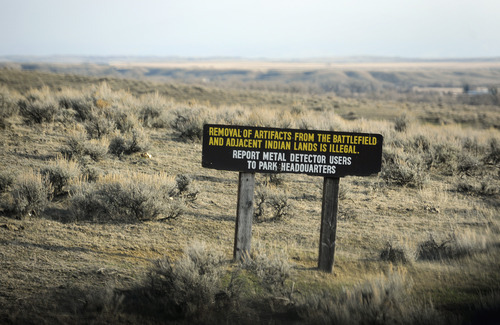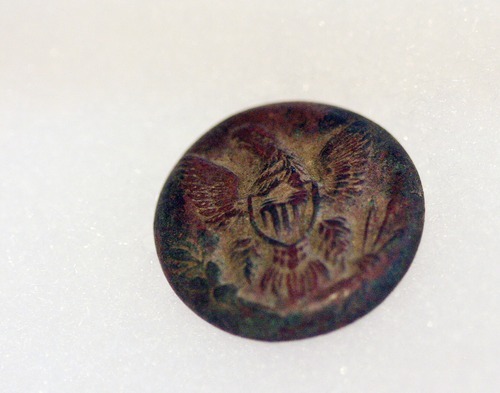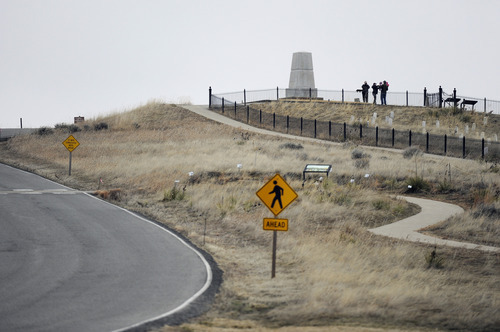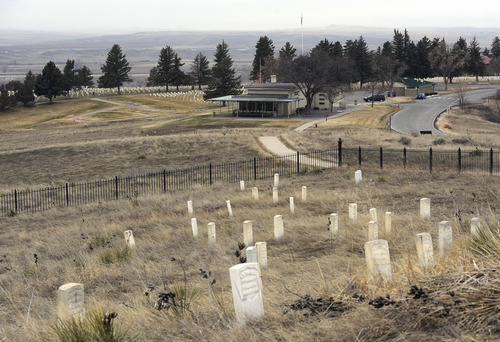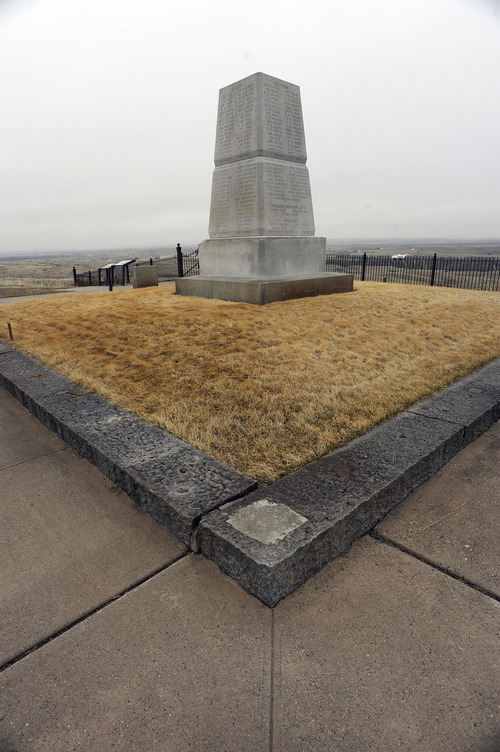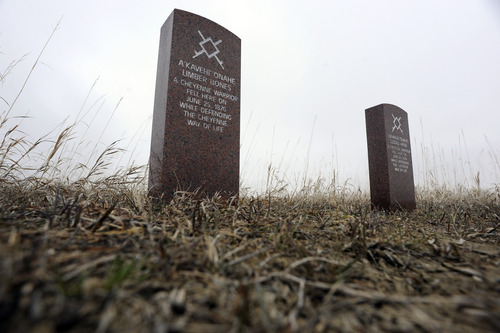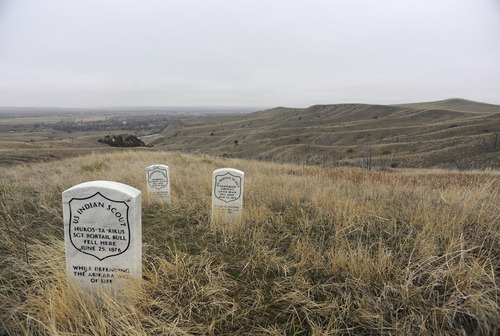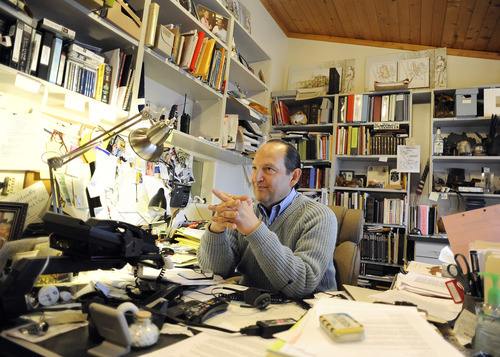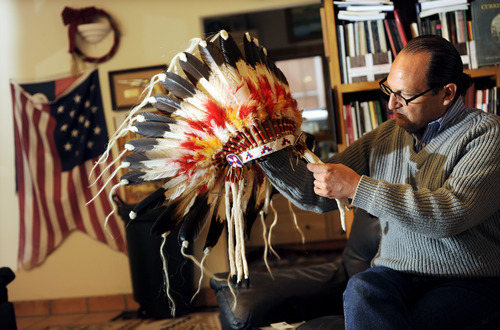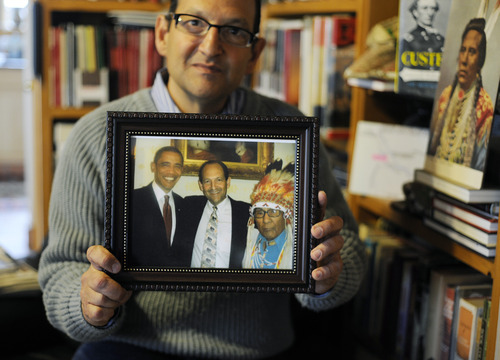This is an archived article that was published on sltrib.com in 2011, and information in the article may be outdated. It is provided only for personal research purposes and may not be reprinted.
Garryowen, Mont. • A Montana artifact dealer is fuming about his treatment by two dozen armed federal agents who raided his property after a sting operation alleging illegal sales.
Sound familiar?
Just as their counterparts in Utah would do to dozens of accused artifact looters in 2009, Bureau of Land Management agents six years ago swarmed their suspect here in a manner that he says left him in tears and fearing for the future of his museum and trading post. Only in this case, instead of pleading guilty as many of the Utah suspects have done, Chris Kortlander fought back.
Never charged with a crime after years of investigation and two raids of his vaults and nonprofit museum on the edge of the Little Bighorn Battlefield, Kortlander said he understood the rage that San Juan County residents vented at the government after agents rounded up their neighbors. He has since struck up a friendship with the son of suspected Utah artifacts looter James Redd, the Blanding doctor who killed himself after a raid on his home.
"I know what the people in [Utah] went through," said Kortlander, the ponytailed Montana rarities dealer who has made a life around one of America's most famous deaths. "It's just devastating. It changed my life forever."
Utah's raids led U.S. Sen. Orrin Hatch to question Attorney General Eric Holder about why such force was necessary to dispatch nonviolent crimes. It's a question that, for the Utah senator, remains unanswered because some of the charges still are pending.
"We were informed that it was an active investigation," Hatch spokesman Mark Eddington said, "and the facts of the case were covered under the grand jury's secrecy clause."
Kortlander's case started with a cavalry uniform button that a government operative sold to him and that Kortlander later resold on eBay with a letter claiming it came from private land at the battlefield. Artifacts from the fight are legal to own and sell if found on private land outside the Little Bighorn Battlefield National Monument, and Kortlander has sold such items that he said he bought from a neighbor's collection. This one, though, contained a government "microdot" tag on the back, and the government used its sale, with the incorrect documentation, to justify a search warrant. Kortlander blamed an intern's mistake and said the item — a common eagle-shield button from the 19th century — looked like others in his collection.
A major difference in the cases is that in Utah the suspects were indicted and most have pleaded guilty, receiving probation for violations of federal laws protecting artifacts and graves on public and tribal lands. Kortlander, suspected of fraud and, in a second raid, an attempt to sell Plains Indian war bonnets with eagle feathers, said the Interior Department has closed his case. In both cases, BLM agents launched raids fully prepared for any eventuality, with knowledge that the suspects owned guns, and in both they faced criticism of heavy-handedness.
"They took down one of my interns with a machine gun to the back of the head," Kortlander said. "This was a college intern. We're talking about full riot gear. Shields. Pistols. Shotguns. It was just like you see in the movies."
The BLM's Montana office declined to comment on the case or the conduct of its officers while Kortlander's lawsuit, filed last winter, remains active. The U.S. Attorney's Office in Montana also said it could not answer any questions about the case or the raids, including why Kortlander never faced prosecution or why the government continues to hold war bonnets that he claims are legal because they predate the law forbidding people who aren't American Indians to own feathers. Kortlander said those headdresses were legally donated to his nonprofit Custer Battlefield Museum and he never tried to sell them.
The dealer with a longtime fascination for "stuff from famous dead people" has been mired in one legal skirmish or another almost since he arrived here from California and bought the "town" of Garryowen — now a gas station, home, Subway sandwich franchise and museum on the land where Lakota Sioux leader Sitting Bull made his camp when the 7th Cavalry launched its fateful 1876 attack. Railroad men later named the place after the Irish dance tune that Lt. Col. George Custer's regiment had used as its march.
Kortlander came here in the early 1990s and bought the town after a wildfire destroyed his Malibu home. Creating a museum on the locale where the Indian Wars' most-studied battle started was to become his new life. But before he could finish the building the Crow Tribe, owner of the surrounding lands, imposed a tax on non-Indian resorts within reservation boundaries. He eventually latched on to a case by a similarly situated property owner on the Navajo Nation. The Supreme Court sided with them and banned the taxes.
Other disputes followed, including one that Kortlander said likely launched the investigation against him. He briefly dated a woman who, in 1995, was recently divorced from a then-BLM agent, and he believes the bad blood started there.
Still, Kortlander's efforts to enhance tourism in this lonely corner of the West also earned him accolades, including the Montana governor's Tourism Person of the Year award the year before agents searched his property.
The way Kortlander tells it, BLM agents or their operatives later started trying to sell him artifacts, but he wasn't interested. He ultimately bought the button — out of pity, he maintains — when someone claiming to be a stranded migrant said he needed gas money.
Kortlander's lawsuit alleges that agents searched beyond the scope of their warrant before he arrived at the scene, and then intimidated him into signing off on the extra searches. He says the U.S. Attorney's Office later sought to squeeze a confession and plea deal from him by repeatedly telling his attorney that an indictment was imminent.
The lawsuit alleges numerous constitutional infringements, including on Kortlander's rights to be free of unreasonable search and seizure, as well as the use of unreasonable force.
The Justice Department declined to respond to Kortlander's assertions. But in court papers it denied his claims and asked for a dismissal because government agents have immunity from lawsuits.
That limited immunity is difficult for a plaintiff to overcome, said Paul Cassell, a University of Utah law professor and former federal judge who cautioned that he is not familiar with the specifics of Kortlander's case.
Lots of people claim the government overreached or used unreasonable force in investigations or arrests, Cassell said, but few have enough evidence to win the point in court. Proving a constitutional violation is difficult.
Defendants "can say agents oftentimes hope that by a show of overwhelming force they can avoid any temptation [by the suspect] to resort to violence," Cassell said. Judges often concede the point and give agents leeway.
Kortlander hopes to build a new museum here centered on the papers of Libby Custer, the fallen officer's widow, and frontier women. He owns Mrs. Custer's collection of clippings and letters about her husband and says she was a pack rat much like himself. To accomplish it, though, he likely needs a wealthy philanthropist's help.
Meantime, win or lose in court, he has a point to argue. "Federal agents," he said, "need to be held accountable for their actions."
The Utah raids
In June 2009, federal agents swarmed the Four Corners region in the culmination of a sting that brought indictments against two dozen alleged artifacts looters and traffickers. They were accused of dealing ancient Puebloan artifacts taken illegally from federal and tribal lands. More than half have since pleaded guilty and been sentenced to probation; other cases are pending.
One suspect committed suicide the day after the raids, and another did so shortly thereafter, adding to angry allegations around Blanding of an overbearing crackdown. The undercover operative who aided the government's cases later committed suicide as well.


